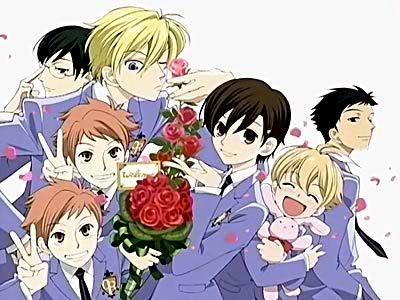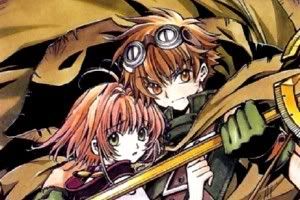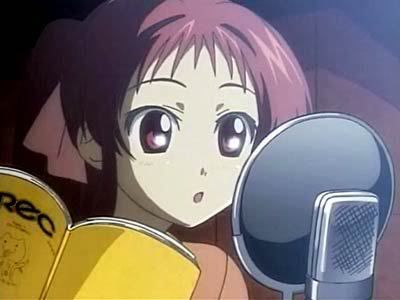REVIEW: The Obataku Critiques MONONOKE!

ALL PHOTOS © MONONOKE COMMITTEE
Anime, unlike cartoons and other western styles of animation, hold the distinction for innovativeness. If you are more accustomed to traditional anime styles, however, these experimentations with new styles may at first be jarring to the senses. I remember the first time I watched Gankutsuou (The Count of Monte Cristo), I developed a bad headache from watching all those computer-applied textures. After a few episodes, I grew accustomed to its unique animation style, and it remains my favorite anime of all time.
Which brings us to Mononoke. This 12-episode anime was the offshoot of the final story arc "Bakeneko" in the horror trilogy, Ayakashi, which will soon be aired on Animax. Because of its distinctive anime style and riveting plot, "Bakeneko" reaped critical acclaim. It's only expected that an anime will be developed from it.
First, just what is an "ayakashi" and a "mononoke"? Ayakashi are malevolent spirits that plague mankind with curses and evil ills. When an ayakashi combines with the grudge, hatred and anger that exists in a human heart, it transforms into a monster known as a mononoke.
Mononoke continues the adventures of the mysterious Medicine Seller, who seeks out these evil creatures. He must first reveal the mononoke's physical shape or Form ("Katachi"), the reason for its rage or Truth ("Makoto"), and the state of its soul or Regret ("Kotowari") before he could unsheathe his formidable Sword of Exorcism and destroy the evil spirit.
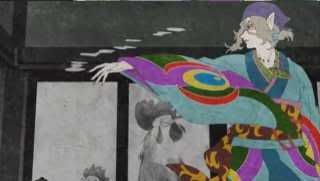
The anime consists of five spine-chilling stories:
1) "Zashiki Warashi", about a pregnant woman who seeks shelter in an inn with a bloody past
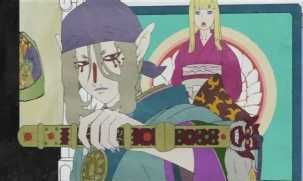
2) "Umibouzu", about the passengers of a merchant vessel who find themselves trapped in the infamous Devil's Triangle (Japan's version of the Bermuda Triangle)
3) "Noppera-bo", about a woman who confesses to murdering her samurai husband and his entire family
4) "Nue", about three men who embark on an incense-smelling test in order to win the hand of a noblewoman
5) "Bakeneko", about the passengers on the maiden voyage of a spooky subway train
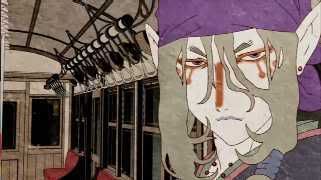
Mononoke is both a visual and an intellectual treat. Visually, it's like watching a moving Japanese tapestry on your TV screens. Except for "Bakeneko" which utilizes the color black, the use of pastel colors heightens the creepy ambience of the anime. People who say that originality in books and film is dead would be pleased to know that it is alive and kicking in Mononoke. All the stories are refreshingly new, and it does not need gratuitous violence or gore to scare you out of your wits. The tight plot will keep you on edge, only to drop you off the precipice with an unexpected twist or cliffhanger.
Credit to Mononoke's appeal falls squarely on the shoulders of the talented seiyuu voicing the characters, making this one anime that I would prefer NOT to be dubbed in English. For one, you will get to appreciate seiyuu Sakurai Takahiro's ability to pitch his voice very low without falling into a mumble, like other voice actors are prone to do. Also, his line delivery ranges from dry sarcasm to the blusterous delivery characteristic of actors in traditional Japanese Noh plays. To those who are particularly interested in how Japanese dialects sound like, the fourth story "Nue" has all the characters speaking in Kansai-ben, which is often disastrously rendered with an American country twang when dubbed in English.
Admittedly, Mononoke is not for all audiences. The mature themes hinted at in the story arcs makes this anime more for older teens and adults. This is also not advisable for those who don't want their brain cells stimulated. I've had a friend call it "boring", but as a more overly critical acquaintance said, and I quote her, "Those who complain about boredom are lazy people to begin with."
In any case, to those who want to give Mononoke a chance, mark my words! This is one anime that you will find mentally stimulating. If there is a message that Mononoke would like to convey to its viewers, it's that the most fiercesome monsters are created from the darkness that exists in the human heart. In fact, the most terrifying monsters of all might just be humans themselves.

